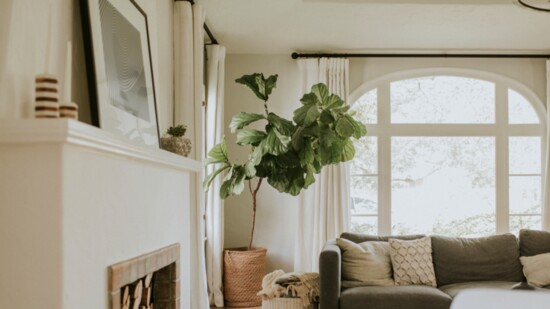If you have resolved to make your home a more peaceful sanctuary, adding a carefully curated collection of house plants can be an excellent way.
As Keeli MaKae, account manager for Plant Solutions notes, indoor plants are highly effective at creating “biologic balance.”
“Biologic balance, in the context of plants, refers to the harmony that exists between humans and their environment when natural elements are thoughtfully integrated into our indoor spaces,” MaKae says, adding that people are biologically wired to thrive when surrounded by nature.
“This can be a challenge since humans now spend about 90% of our time indoors! Plants play a key role in creating this balance by bringing the benefits of the natural world into the buildings we play, work, eat and sleep in.”
One way houseplants can help people on an emotional level is through their calming and stress-reducing effects.
As MaKae notes, studies have found that the mere act of looking at greenery can lower blood pressure and promote feelings of relaxation.
“Also, caring for plants fosters mindfulness and a sense of purpose, which can improve mood and reduce anxiety. A living space with plants can inspire creativity and make us feel more connected to the world around us,” she says.
Houseplants may also have a tangible physical impact, beginning with their ability to improve the air quality in the home by helping to filter out toxins.
“Additionally, the natural greens of plants and their organic form provides visual rest and contrast to the harsh lines and screens of modern interiors, which can reduce eye strain, especially in workspaces,” MaKae says, adding that research has shown that people recovering from illness or surgery heal faster and experience less pain when surrounded by plants.
“These benefits align with the principles of biologic balance, ensuring that the indoor environments we live in meet our biological needs.”
For people who feel they have figurative black thumbs rather than green, MaKae says they can still enjoy some of the benefits by adding artificial plants to the home.
“Artificial plants are great for creating the look of greenery and research shows that even visual exposure to natural elements—or realistic representations of them—can have calming effects,” MaKae says. “They may help make a space feel more inviting and tranquil, especially in environments where live plants are impractical.
Another option for people who want to have real house plants but are unsure of how to care for them properly is to hire a company like Dig It Gardens to help.
As owner Jessica Jerrell notes, Dig It Gardens begins with a consultation to evaluate how many plants the homeowner has.
“The cost of this service is $150. We then will provide a detailed proposal for either just interior plant maintenance or additional plant and pottery material along with maintenance,” she says, adding that they service most of their interior plant clients bi-weekly. “We believe that with the correct education and partnership we can all have plants be the least worrisome part of our lives. Our goal at Dig It is to ensure plants bring joy each day. Life is stressful enough.”
To gain the most benefits from houseplants, MaKae says they need to be placed strategically.
“For example, placing plants within a clear line of sight from frequently used areas, like desks in an office or seating in a living room, ensures that people can visually connect with greenery throughout their day,” she says. “This visibility can help reduce stress, improve focus, and create a sense of calm.”
How plants are placed in a home is crucial in what MaKae refers to as “biophilic design,” or increasing the connection to nature through things like houseplants.
For instance, in open spaces, taller plants or living walls can act as natural dividers, offering privacy and noise reduction while maintaining a biophilic connection.
“For relaxation areas, a grouping of lush plants can foster a sanctuary-like atmosphere that invites feelings of safety, rest, and rejuvenation,” she says.
Natural light is also an important consideration.
“Many plants thrive when positioned near windows or under skylights, where they can access sunlight,” MaKae says. “A well-placed plant in these areas not only enhances the plant’s health, but also connects people to the rhythms of the day as light filters through the leaves, creating dynamic patterns and shadows.”
Proper placement amplifies the power of plants, MaKae notes, turning them into more than just decor, but also tangible contributors to the health and harmony of a space.
“I'm always amazed by the countless benefits of connecting with nature in everyday life, and how few people are aware of the science behind it, even though they can feel the positive impact!” she says.
One way houseplants can help people on an emotional level is through their calming and stress-reducing effects.
"... The natural greens of plants and their organic form provides visual rest and contrast to the harsh lines and screens of modern interiors, which can reduce eye strain ..."
